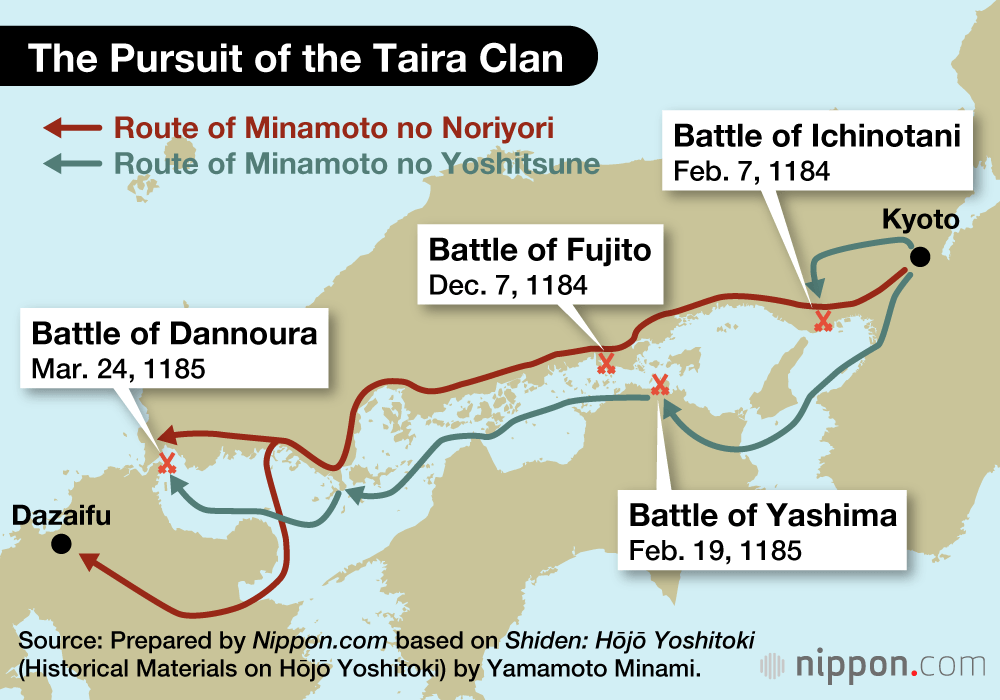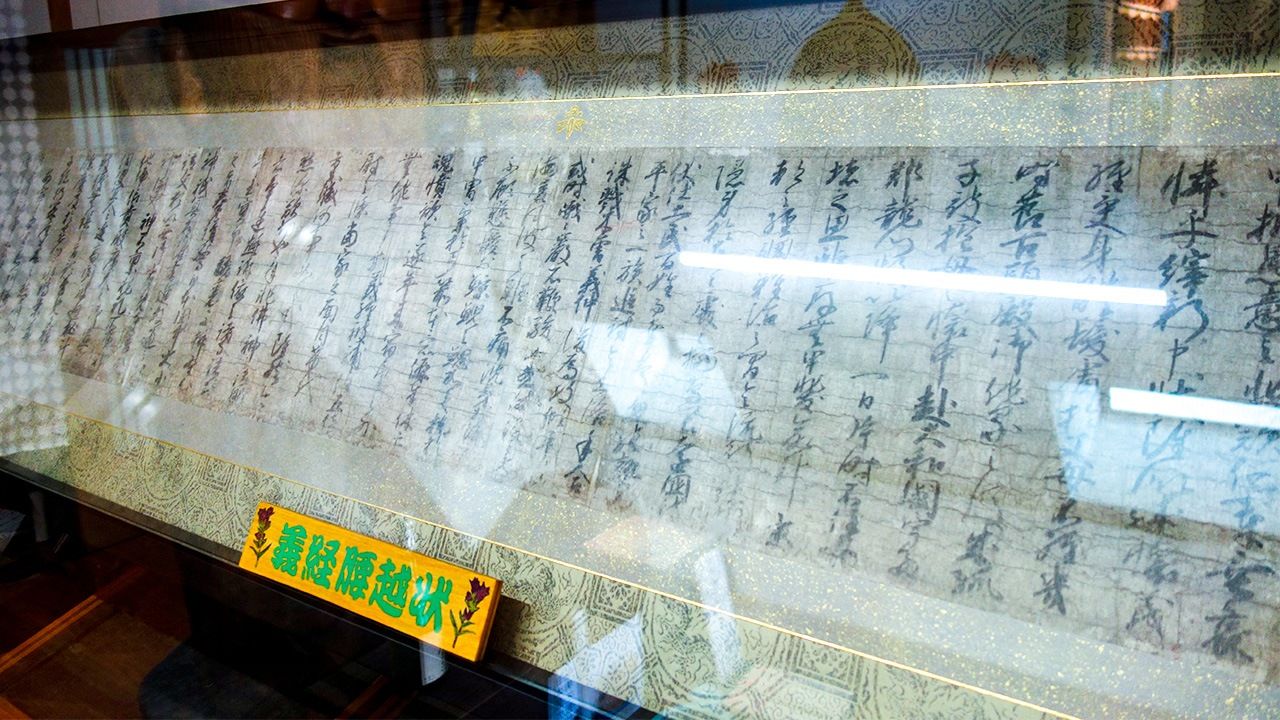
Historical Landmarks of the Kamakura Lords
Manpukuji: Setting of a Great Samurai Tragedy
History Travel Culture- English
- 日本語
- 简体字
- 繁體字
- Français
- Español
- العربية
- Русский
A Heartfelt Epistle from Yoshitsune
Koshigoe Station on the “Enoden,” the Enoshima Electric Railway connecting Kamakura and Fujisawa, is an unusual one for the line. Although the trains all have four carriages, Koshigoe’s platform is only long enough for three, and the front carriage doors do not open here. Near this station is a crossing that leads to a small temple, Manpukuji. Despite Minamoto no Yoshitsune’s acclaimed victory at Dannoura in 1185, he was denied entry to Kamakura, and found refuge at this temple with his loyal retainer, the warrior-monk Benkei. It was here that Yoshitsune is said to have composed the Koshigoe Letter, addressed to Ōe no Hiromoto, head of the Kumonjo (Board of Public Documents), to appeal to Yoritomo.
A draft of the letter is kept in a glass case at the temple. According to temple officials, it is said that Benkei was the scribe for this version, which Yoshitsune then rewrote. There is a small pond called Suzuri no Ike, from which Benkei is said to have taken water to make ink for writing the draft.

Steps leading to the temple Manpukuji, across the Enoden tracks. (Photo courtesy of the author)
This is said to be the original draft letter. It has been well-preserved, allowing us to view penmanship from 800 years ago. It is an extremely frank testament to Yoshitsune’s bitterness, despair and frustration. The following is a translated excerpt:
I was chosen as one of His Lordship’s deputies and, fighting as the bearer of an imperial commission, overthrew the enemies of the court and erased the shame of my father, Yoshitomo, who suffered defeat by the Taira clan. I had supposed that my deeds would be commended; yet, to the contrary, I have been the subject of slander, and, here in Koshigoe, I weep tears so bitter they are bloodied. As regards my appointment as a lieutenant of fifth rank, was that not a remarkable honor for a member of our family? Why have I invited your anger? (Japanese extract from Tera monogatari: Manpukuji [Temple Tales: Manpukuji])
We are not aware of the fate of the letter after it was handed to Hiromoto, but it seems it never reached Yoritomo. Even if it had, it was unlikely Yoshitsune would have been granted access to Kamakura.
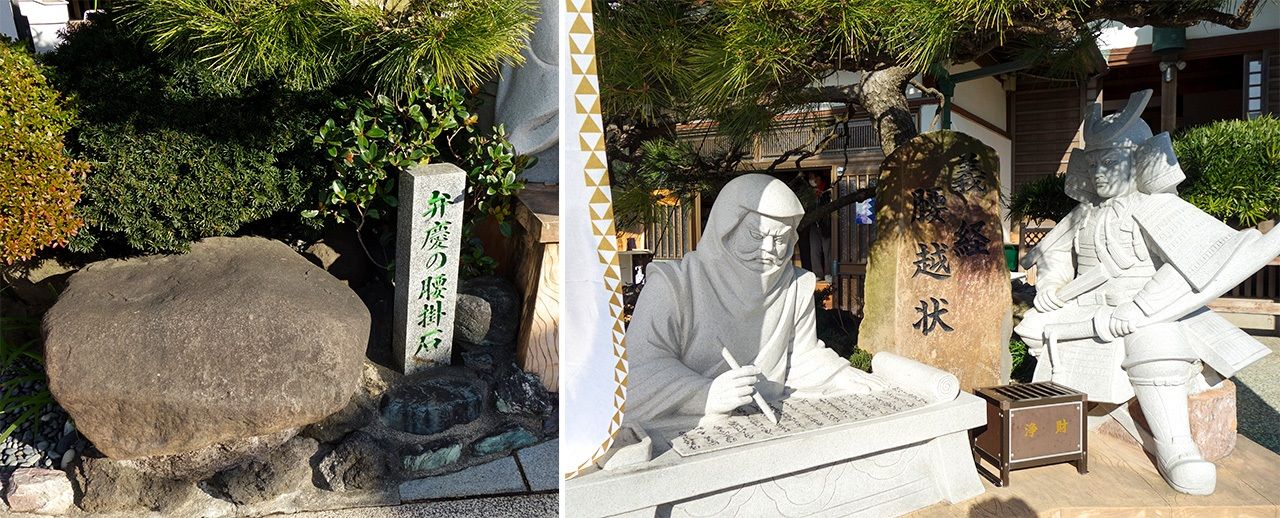
Benkei no Koshikake-Ishi (Benkei’s Stone Seat), at left, and a statue of Benkei with Yoshitsune in Manpukuji’s grounds. (Photos courtesy of the author)
Yoritomo, who was not a proficient warrior, was possibly jealous of Yoshitsune’s military exploits, such as his famed surprise attack on the Taira clan from a steep precipice to the rear of Ichinotani, their defensive position at Suma during the Battle of Ichinotani (1184), and the battles at Yashima and Dannoura (1185), whereby he subdued the Taira. Yoritomo conferred no military honors on Yoshitsune.
The decisive factor was Yoshitsune’s acceptance of a high rank from the Imperial Court without obtaining Yoritomo’s permission. At the time, Yoritomo made recommendations to the court for conferring official ranks upon vassals. For a vassal to seek a rank directly with the Imperial Court undermined Yoritomo’s authority. Yoritomo also hoped that his recommendations would ensure that he was recognized by the court as the leader of the samurai.
Rooting for the Underdog
But Yoshitsune brazenly flouted this arrangement. In fact, in the Koshigoe Letter, he stated that his conferred rank brought honor to their family, indicating his lack of understanding of the weight of the situation. In his book Kamakura misterī kikō (Kamakura Mystery Travelogue), author Saitō Sakae writes: “Yoshitsune believed that, because he and Yoritomo were brothers, he could be forgiven for most of his foibles. He failed to grasp the significance of his punishment.”
There is also the whiff of a scheme by Emperor Go-Shirakawa to cause discord between the brothers and thereby weaken their influence. There is a tendency to conclude that Yoshitsune was politically naive, but he gained the sympathy of many people, leading to the coining of the term hangan biiki, equivalent to “rooting for the underdog,” where hangan is a reference to Yoshitsune’s rank.
After he was denied entry to Kamakura, Yoshitsune fled to Ōshū, in modern-day Iwate Prefecture, where he was pursued and killed. In 1189, Yoshitsune’s head was sent back to Manpukuji in Kamakura for identification. The Japanese historical chronicle Azuma kagami describes how “All who saw him drenched their sleeves wiping away their tears.”
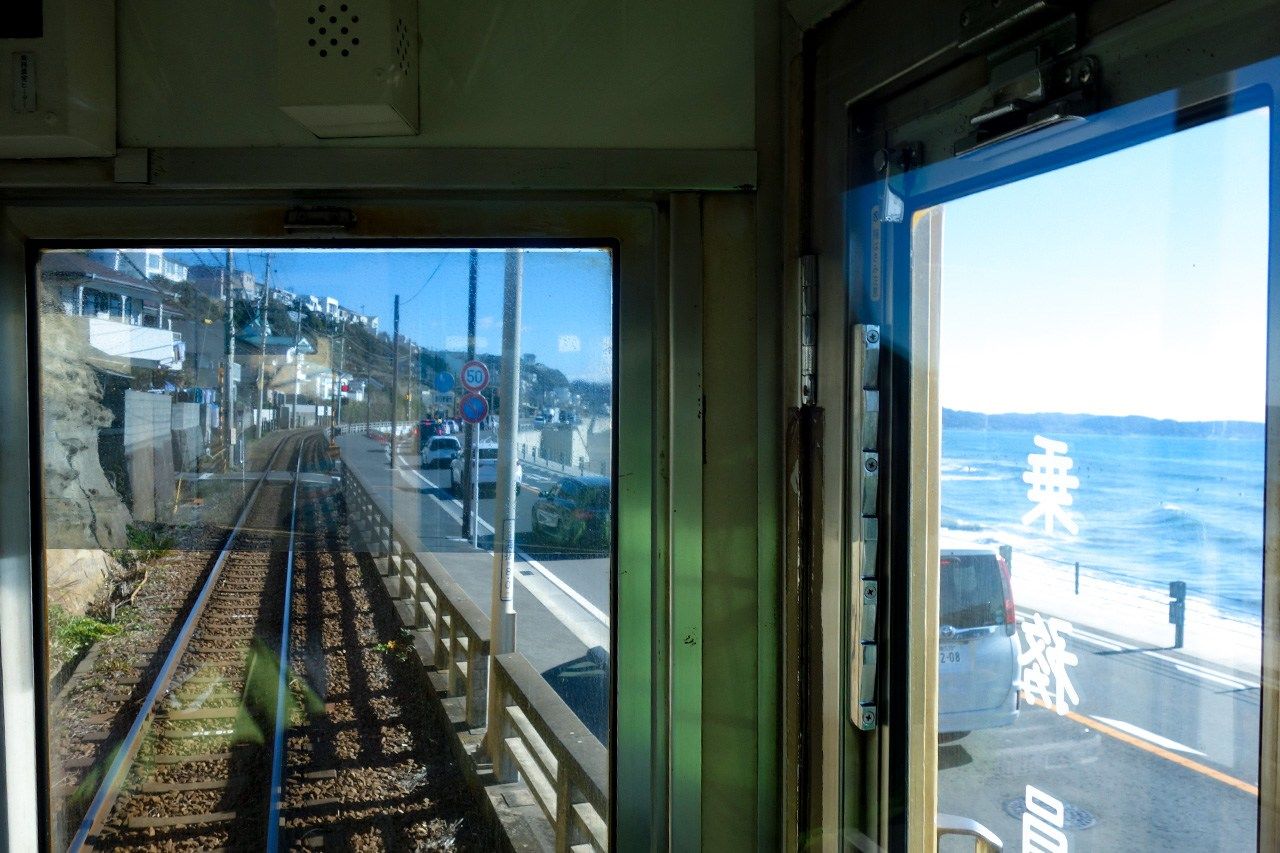
Ocean view from the Enoden train beyond Koshigoe and Cape Koyurugi. (Photo courtesy of the author)
Today, the Enoden train snakes between houses in Koshigoe en route to Kamakura before suddenly emerging to breathtaking ocean views at Shichirigahama, a popular surfing beach. It is hard to imagine the tragedy that unfolded here some 800 years ago. But Yoshitsune’s popularity has not waned in this area. A festival in his honor, the Yoshitsune Matsuri, is held here each year, on the third Saturday in April.
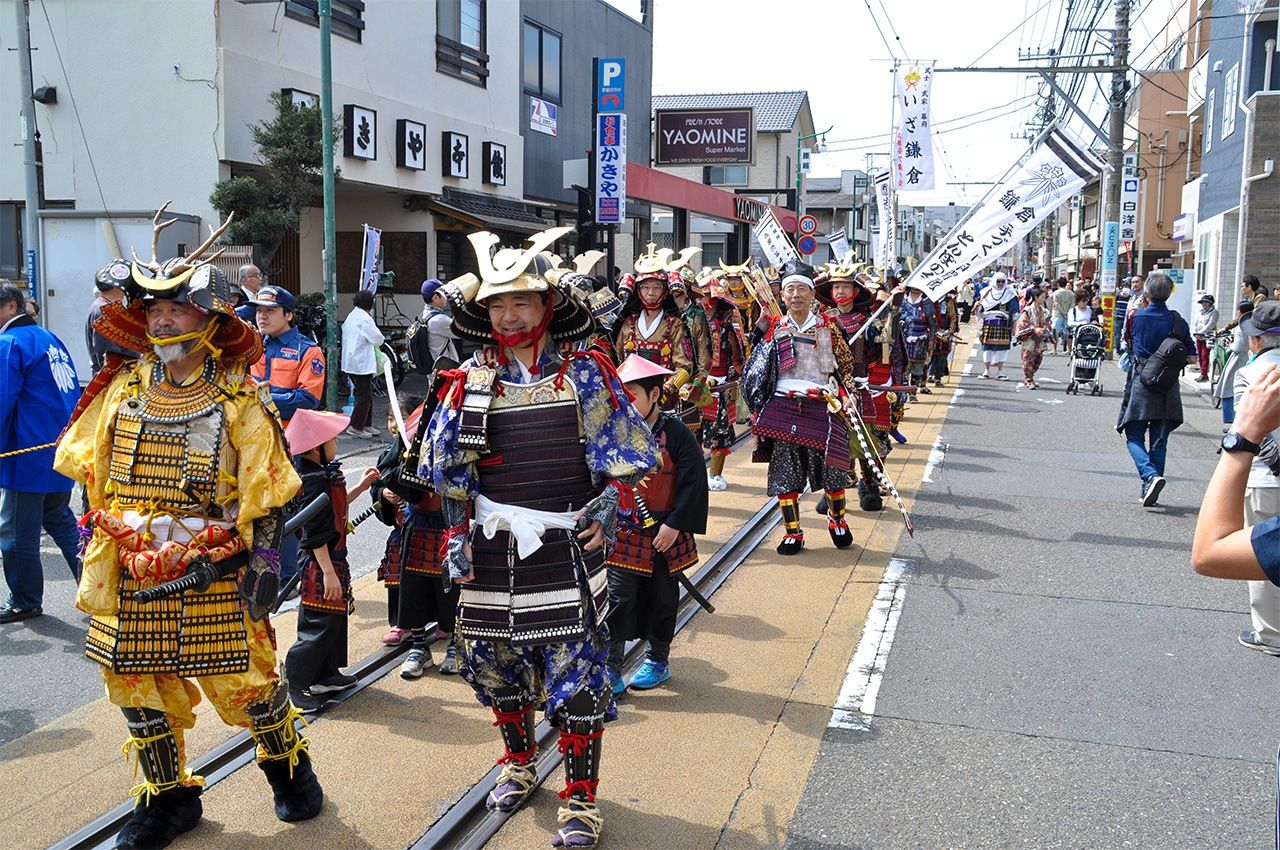
The lively Yoshitsune Matsuri. (Photo courtesy of Manpukuji)
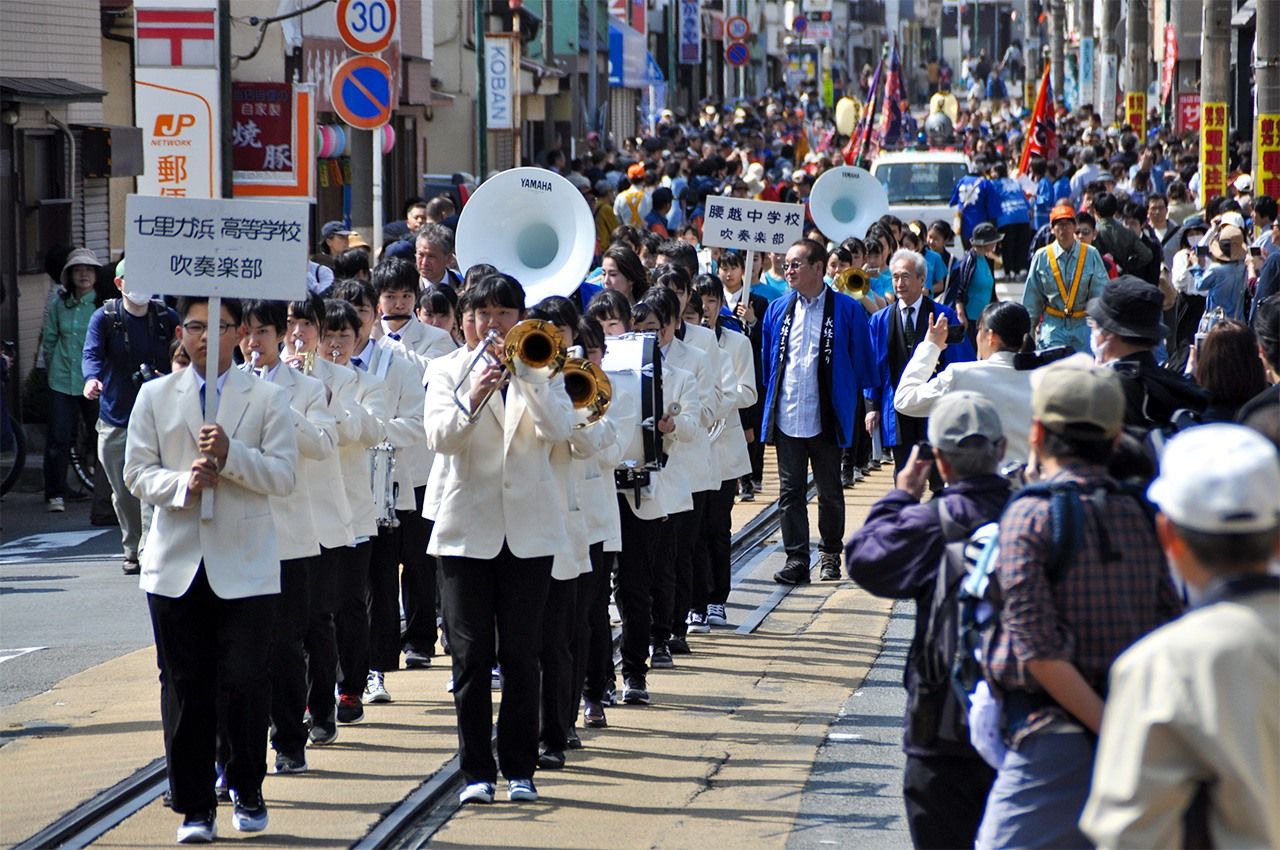
Brass bands from local junior and senior high schools jazz up the parade along the Enoden tracks. (Photo courtesy of Manpukuji)
(Originally published in Japanese. Banner photo: The Koshigoe Letter displayed at Manpukuji. Photo courtesy of the author.)
Access
Manpukuji: A five-minute walk from Koshigoe Station on the Enoshima Electric Railway.
Event
Yoshitsune Matsuri: Held annually on the third Saturday of April. The temple holds a memorial service, which is followed by a samurai and brass band parade from the temple Ryūkōji to Koyurugi Shrine. Unfortunately, the event was canceled in both 2020 and 2021 due to the spread of COVID-19. Check the Manpukuji website (http://www.manpuku-ji.net) for information in Japanese on the festival in 2022.
